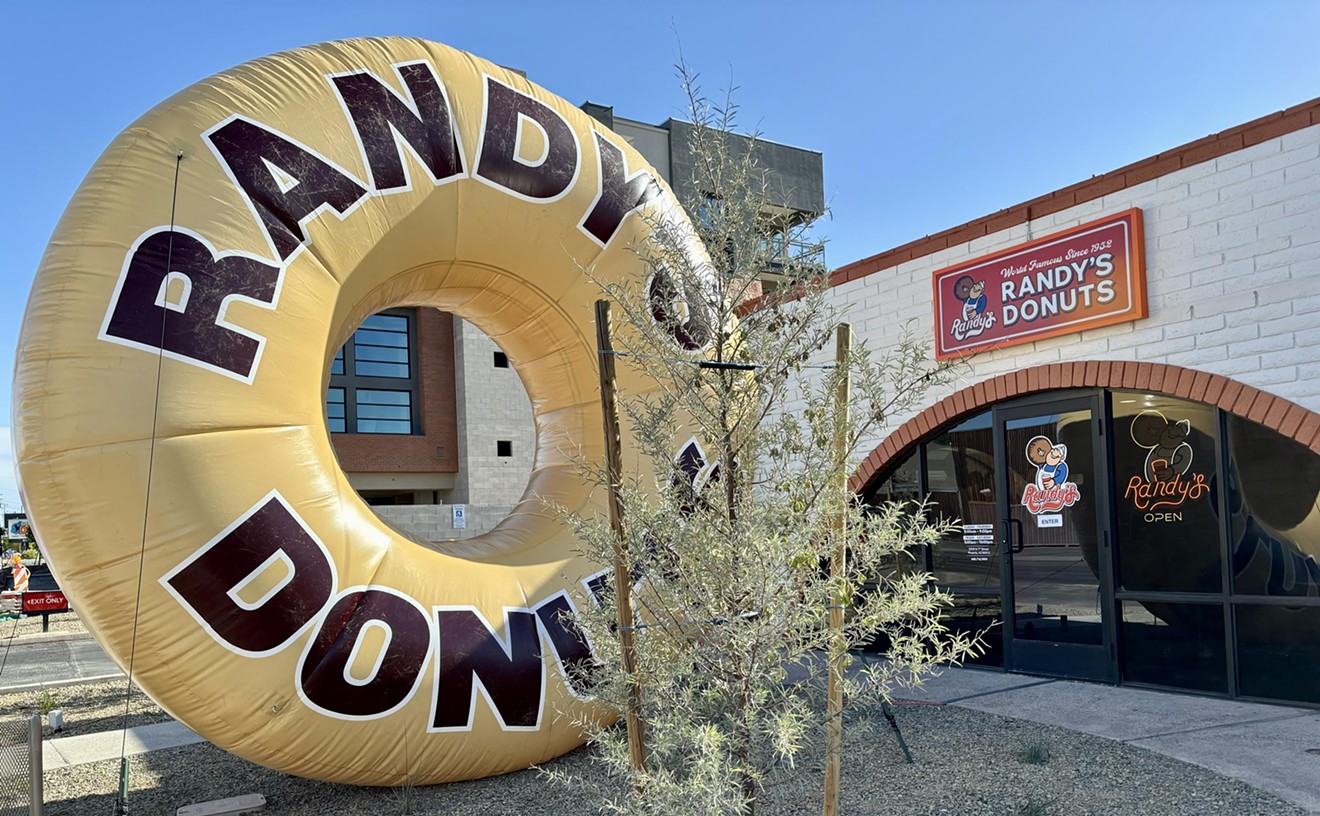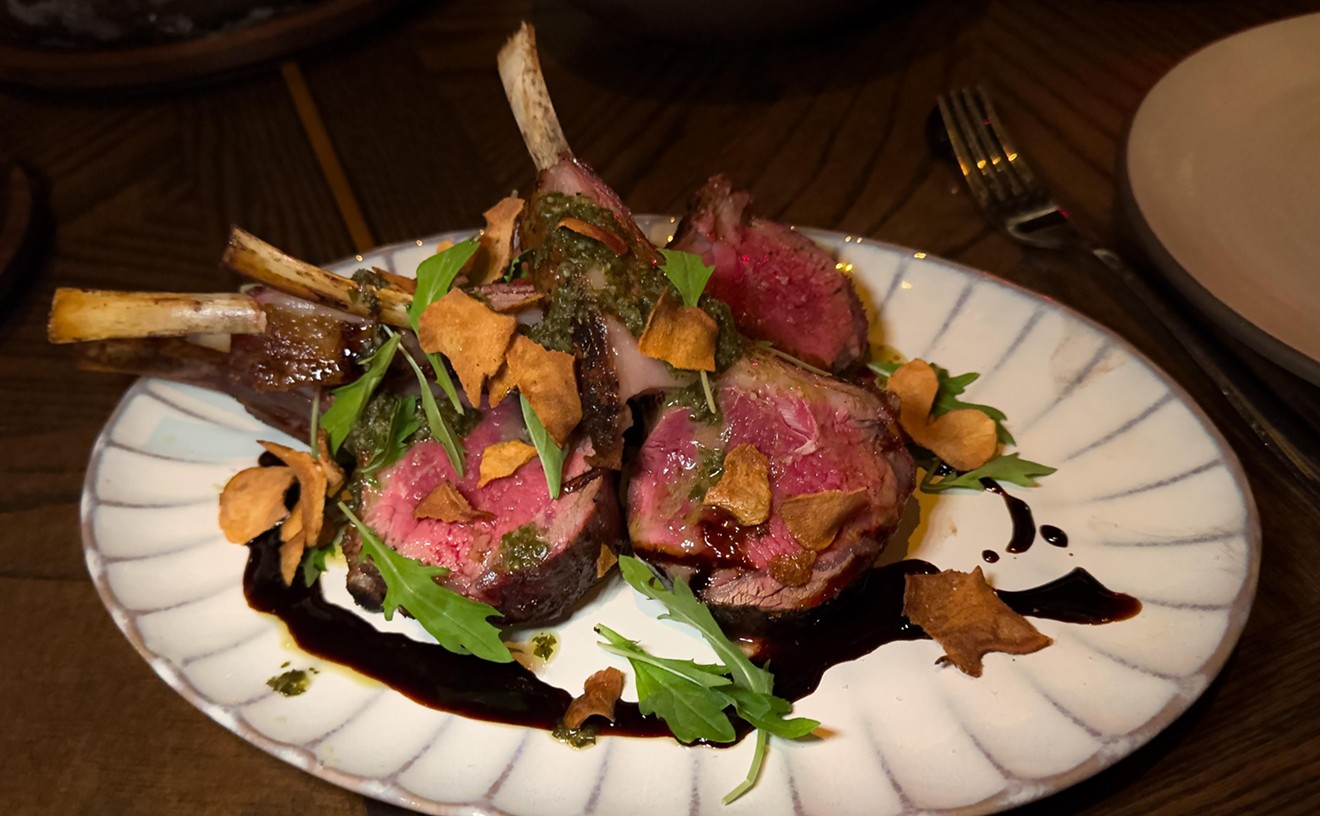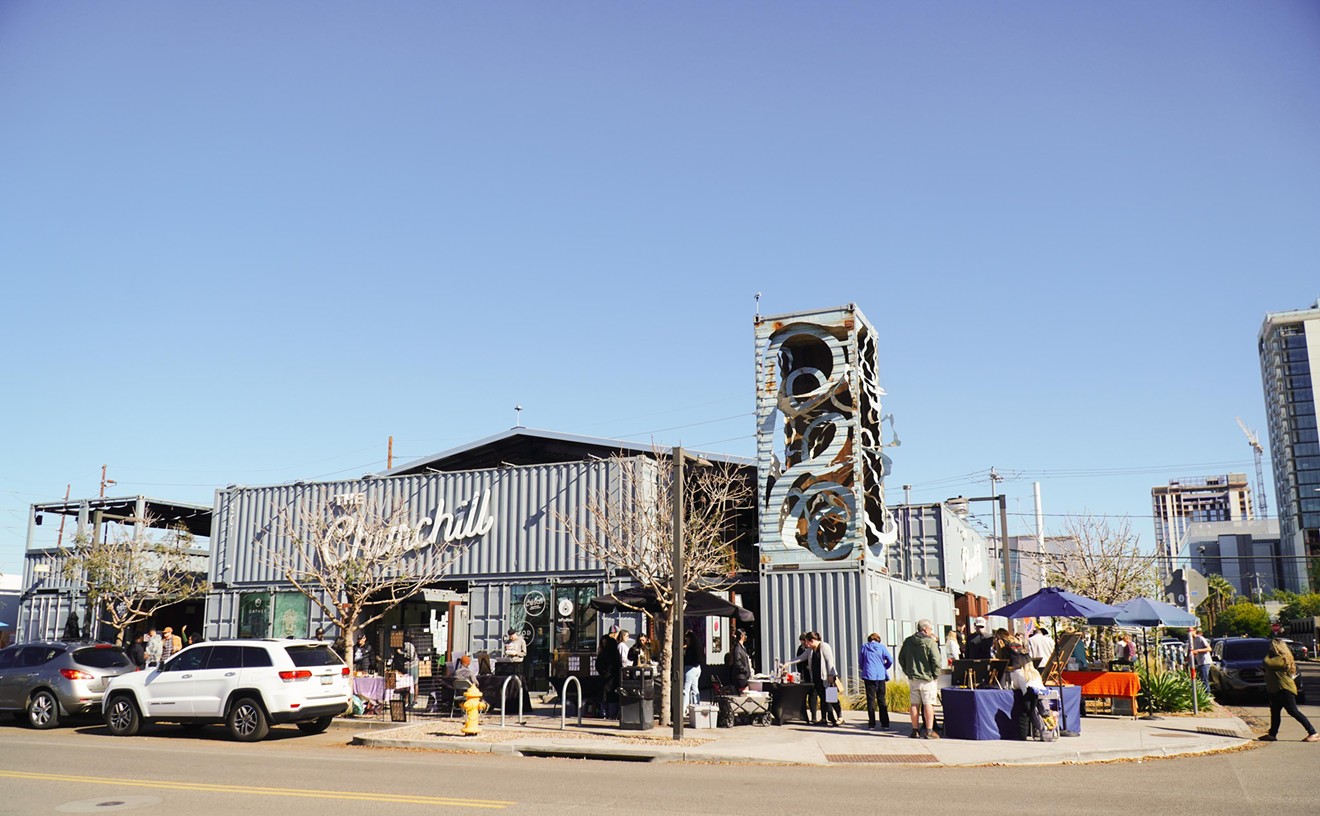Master Gardener Kari Spencer is well-versed in the challenges of growing edible plants in the desert. Spencer teaches Urban Farming at the Southwest Institute of Healing Arts and is founder of The Micro Farm Project. Her home is a functional urban food oasis, complete with goats, chickens, and turkeys. We spoke with Kari about challenges common to Phoenix-area gardening, how to control pests (without any yucky chemicals), and upcoming events for aspiring urban farmers.
See also: Majestic Garlic's Sprouted Might Not Be Magical, But It Does Tastes Pretty Darn Good
Let's talk about water - how can people grow food in the desert with minimal water usage?
In the summertime, people tend to over-water their gardens because they want to keep things alive. We can alleviate the water situation by using wood chip mulch on top of the soil. That will help you feed the soil as well as to hold in moisture. I recommend putting the wood chip mulch several inches away from your plant. Don't bunch it up against the plant. That will help the soil absorb the water, and keep the soil temperature cooler. That will help your garden if you have a blanket of mulch on top of the soil.
What about our salty clay soil? How can we make the most of the dirt we've got?
We have salty soil because of our salty water. What happens is that when we get rain or when we irrigate, typically the water only goes down into the soil a few inches. A lot of it, because it's so near the surface of the soil, evaporates back off. That leaves behind a lot of mineral deposits in the soil. Some of those mineral deposits are things that our plants need, but some of them are minerals that will burn the plants -- they're salts.
The way you know if you have this situation is the edges of the leaves of your plants turn brown. The middle will be green, but you'll see at the very tip it will start to turn brown and that will move backwards into the leaf. It can happen in container plants or it can happen in your in-ground garden.
To alleviate that situation, it's really important to water deeply, deep enough that those salts are pushed down into the soil far enough that they're not going to be at the root zone where your plants will be absorbing them. For small garden plants, I recommend watering a foot in depth, minimum. For shrubs, two feet. For trees, three feet.
It's hard to know if you're really getting down that deep, so the only way to really know whether you are or not is to get a soil probe that you can push down into the soil and find out how deep your moisture is going when you water. You might have to test your irrigation and run it a few times to see how long it takes to get the water that deep in your soil.
It may seem counter-intuitive in the desert to water for long periods of time -- but in actuality, if you water a foot in depth, that water will remain in the soil longer and be more useful to your plants over a longer period of time, so you will not have to water nearly as often. It's actually a water saving method!
Once you know how long it takes for your irrigation to put enough water into your garden to penetrate the soil a foot, two feet, or three feet depending on what you're watering, then you want to run the irrigation for that amount of time every time you water. But you can cut back how often you water, and only water when the top few inches of soil have dried out. This requires a little bit of testing -- you're going to have to go out in your garden, run your irrigation, see how long it takes to water deeply enough, then go back out [every day] and see how quickly the soil is drying out. This will change throughout the season. If you water deeply, it doesn't evaporate off because it's down deeper in the soil. It actually saves a lot of water, and you get rid of the salts as well.
What should we add to our soil to make it more conducive to growing plants?
Compost is good for everybody -- and also for plants. If you don't make your own compost, go ahead and buy a good organic source of compost. There are lots of places around the Valley that have it -- Singh Farms, Recycled City, Grow Well, and Western Organics all have good compost, but you can get it at the nursery as well. Compost will help to regulate moisture levels in your garden and will also add critical organic matter to our mineral soils. Our soil doesn't have much organic matter at all in it. We really have to add it by adding compost. It will help add nutrients, and will improve the texture of the soil so plants grow better in it. It's a must for any garden.
If someone has clay soil, gypsum is great to use. It helps to loosen up the soil and break it up so that plant roots don't have to fight so hard to get through it, and so that water can penetrate into the soil much more easily. We live right at the base of a mountain, most of us have clay soil. When you get it wet it, it has a texture like Play-Doh and it holds together really well. It tends to have kind of a light grey color.
Do you have any tips for growing plants in constant sunshine?
Oftentimes in the summertime plants will show signs of sunburn. If you see leaves that are turning brown and crispy, or sometimes fruit will get a brown side on the western side and get kind of a leathery skin -- that's what sunburn looks like. If you notice that on the western side, primarily, of your trees or vegetable plants or even on the fruits, then that's a sign that you might need to provide a little bit of afternoon shade.
Place your garden where it will get good morning sun and then afternoon shade, that's the ideal spot. But not everybody has "ideal." If you do not have a good spot with morning sun and afternoon shade, you can create man-made shade on the west side of your garden using shade cloth. Grow some tall sunflowers or hollyhocks on the west side of your garden, or some climbing beans or cucumbers. Plant something that will be tall enough that when it gets to be 3 or 4 in the afternoon, you'll start to get some shade on your vegetables.
Most veggies will appreciate a little afternoon shade, and it will also reduce the amount of water you need in your garden. The shade will reduce evaporation.
If you're going to use shade cloth, use no more than thirty percent shade -- you don't want to shade out vegetable production completely. Thirty percent will give just enough protection that it won't reduce your harvest, but it will give them an edge to get through the hottest months of the summer.
Natural shade is always better than artificial shade - planting some trees or tall plants on the west side of the garden is a great idea.
What are some common pests to our area, and how can we keep them from destroying our gardens?
One problem people have are Tomato Horn Worms -- and birds that eat tomatoes. Tomato Horn Worms are about four inches long and about as big around as a person's thumb -- they're huge! They can eat a tomato plant overnight, to the ground. So a lot of times people ask me how to keep those off, and how to keep birds from eating the tomatoes when they're ripe.
What I do is drape tulle netting over my tomatoes -- like wedding veil material -- and I drape it all the way to the ground. It can sit right on the tomatoes -- you don't have to put any supports on it -- and that will keep the birds and the Tomato Horn Worms off of the tomatoes. You don't have to worry about keeping the bees away from the tomatoes, because tomatoes self-pollinate. You can help them along by going out in the cool of the morning and shaking them, and they'll pollinate just fine without needing bees.
If a fruit tree is small enough to manage it, you can wrap the tree in tulle netting as well to keep the birds off. I don't recommend buying bird netting because it will get tangled up in your tree, and it's very hard to remove once the season ends. Just take the tulle netting and wrap it around the tree to keep the birds off your fruit. I like to wrap it around my trees and tie it to the trunk, so it's like one big bag over the tree. You may have to use two or three big pieces draped over the tree to get that effect.
If the tree is really big, you won't be able to get the tulle netting over all of it. In that case, the birds will usually eat the fruit at the top and you'll have enough left for yourself in places where it's not so obvious. It's mostly when the trees are small that you need to protect the fruit. People try putting fake owls out to keep the birds away but they figure that out really fast.
Spencer will be offering tours of The Micro Farm Project on Saturday, May 2 at 8 a.m. and 10 a.m. Interested Phoenix farmers should attend GrowPHX's second Grow Your Own Food Summit on September 26, or consider taking one of their Permaculture Design courses. For more information about these events, visit TheMicroFarmProject.com and GrowPHX.com.










